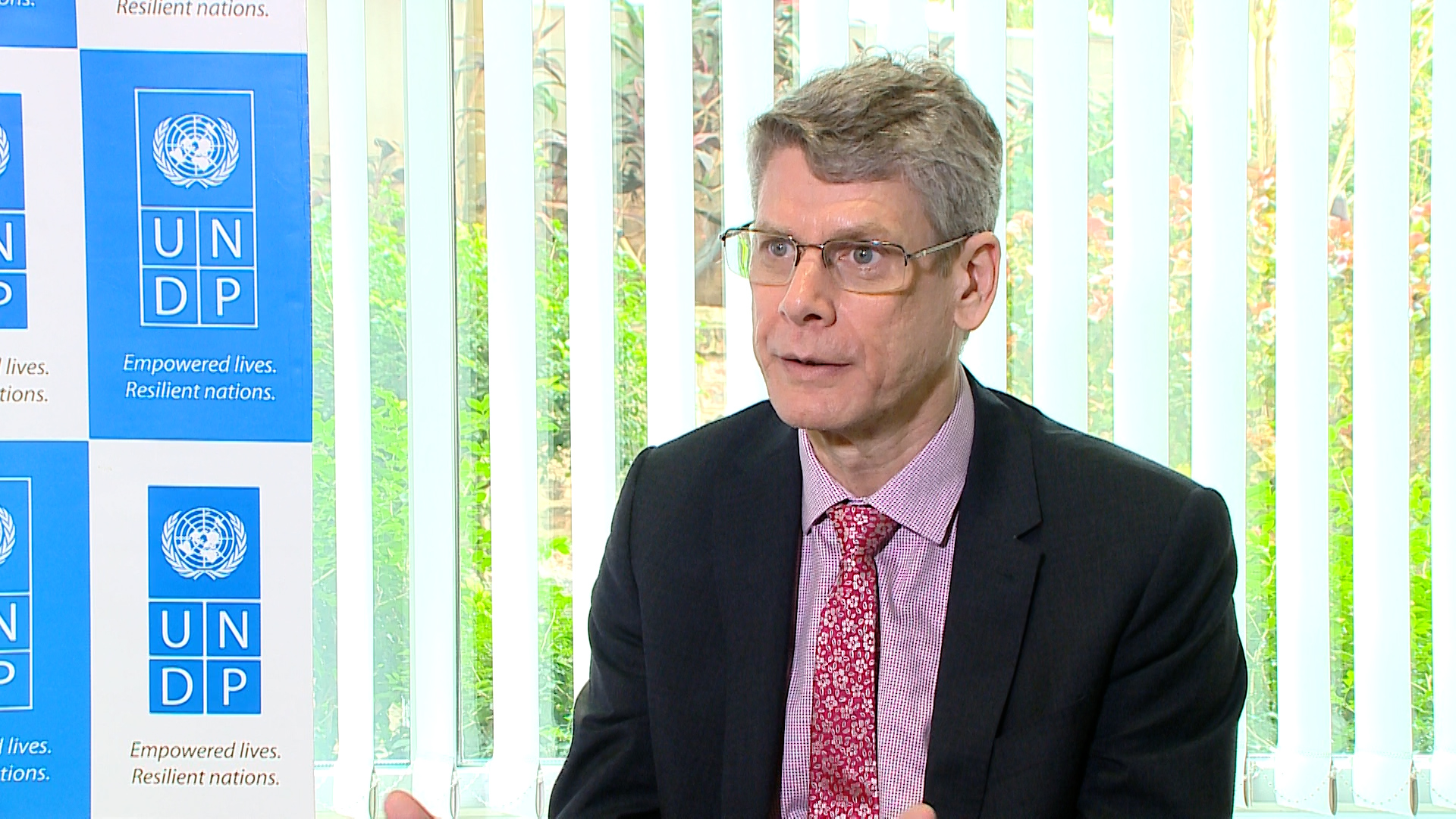UNDP Senior Economist: Viet Nam’s growth rates of 6.3% in 2022 and 6.8% in 2023 are feasible
VGP – Viet Nam’s growth rates of 6.3% in 2022 and 6.8% in 2023 are feasible but these rates obviously depend on what happens with the pandemic, said United Nations Development Programme (UNDP) Senior Economist Jonathan Pincus in a recent interview with the VGP.
 |
|
United Nations Development Programme (UNDP) Senior Economist Jonathan Pincus - Photo: VGP/Thuy Dung |
>>> WB Lead Economist: Viet Nam is still an attractive economy
Regarding economic prospect for Viet Nam in 2022, Jonathan Pincus highlighted that the International Monetary Fund (IMF) forecasted growth in trade volume at 11 percent next year. That looks too optimistic now. But even half of that level would provide a boost to Vietnamese exports.
He spoke highly of the Government’s vaccination program, with around 90 percent of population fully vaccinated at present.
“On September 23, in an important move, the Vietnamese government noted that appropriate measures and steps are needed to "adapt safely and flexibly" or "live together" with the pandemic”, stressed the UNDP Senior Economist.
Last year, Viet Nam’s growth was nearly 3%, which was among the highest in the world during the first year of the pandemic.
Both the Central Institute for Economic Management (CIEM), under the Ministry of Planning and Investment, and the World Bank were optimistic about Viet Nam’s economics in 2021, predicting growth of 6 percent and 6.8 percent, respectively.
In the first half of 2021, GDP increased by 5.64 percent. The total number of newly established and re-operated enterprises reached 93,200, but the number of enterprises temporarily suspending business, stopped operating, waiting for dissolution procedures and completing dissolution procedures, up to 70,200 enterprises.
But at the end of April when the fourth wave of the outbreak began, the third quarter was very difficult, with lockdowns and social distancing, exporters temporarily shutting down. GDP in the third quarter was estimated to decrease by 6.2 percent compared to the same period last year, the deepest decrease since Viet Nam calculated and announced quarterly GDP up to now.
Jonathan Pincus supposed that Viet Nam's GDP is estimated at 2.5 percent in 2021.
Domestic consumption-key factor to boost GDP growth
In most years, consumption growth accounts for something like 60-70 percent of GDP growth. Domestic businesses depend on domestic consumers, and when domestic consumers are not buying goods and services businesses lose incomes and workers lose jobs. This is what happened in the third quarter when consumption contracted year on year.
UNDP's recommendation since August has been for Viet Nam to pursue a more active fiscal policy to support domestic consumption. There is nothing wrong with running a public sector budget deficit when economic growth is slow. The government, because it is able to borrow cheaply and does not have to turn a profit, is the really the only sector that can stimulate demand during a recession.
“We recommend a universal cash assistance program of 1.25 percent of GDP (5 percent of quarterly GDP) to support domestic consumption. This would help families that are struggling to make ends meet because they have lost jobs or household businesses cannot earn money”, said Jonathan Pincus.
It would also help domestic businesses, which are losing money because they do not have enough customers. This is particularly important in the run up to the Lunar New Year Festival (or Tet holidays). Many small businesses rely on sales during this period, and if they underperform it could mean that some businesses cannot survive.
The UNDP Senior Economist suggested launching a universal child benefit for all children six years of age and under, and a universal elderly benefit for all citizens 60 years of age and older. These cash transfers can be carried out easily based on existing identification cards or birth certificates without need for a lot of extra administration. It is important that the demand injection is carried out quickly and equitably.
Families with small children and older people are most vulnerable to transient poverty. In a survey carried out by UNDP and the Center for Analysis and Forecasting, it shows that transient poverty in September was up over thirty percent compared to last year, and that many families were struggling to buy food and pay rent.
It is important to remember that cash payments partly pay for themselves because of the multiplier effect. So if families with older people or small children spend 70 percent of their income on domestically produced goods and services, the multiplier effect-the effect of successive rounds of spending is 3.3. In other words, every VND1 spent generates another VND3.3 in demand. So the taxes that the government receives increase as total domestic demand grows.
Another recommendation is that the government should support export industries by organizing safe travel for workers from their home provinces to industrial estates as well as safe accommodation for workers when they get there.
Referring to recommendations for Viet Nam to soon resume tourism sector in a safe and effective manner, Jonathan Pincus said that Viet Nam has been careful about restarting tourism. This made sense when Viet Nam had relatively low levels of community transmission-for example in 2020 Viet Nam went nearly three months without a recorded case of community transmission.
Viet Nam can learn from other countries by allowing travel under carefully controlled conditions, he recommended.
Scheduled airlines should be allowed to restart while all visitors must have proof of complete vaccination-now that would probably mean three jabs-plus and a negative PCR test at most two days before travel. People who work in the tourism industry will need complete vaccination and routine tests, which will be paid by their employers.
By Thuy Dung

